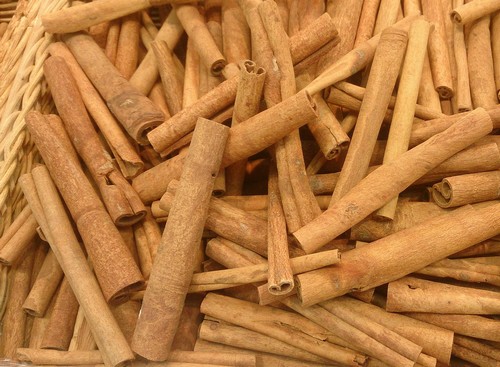The Ceylon Cinnamon Tree: The Tree That Gives Cinnamon
You may know that cinnamon sticks are dried pieces of bark. But do you know the tree that gives this spice used throughout the world? Called Ceylon cinnamon, this tree of the Lauraceae family is native to Sri Lanka.
Presentation of this tree
The Ceylon cinnamon or Cinnamomum verum is a tree in the Lauraceae family, the same family as the sauce laurel and the avocado tree.
This tropical species, which can grow to 10 to 15 meters in height, has smooth, oblong evergreen leaves that are a beautiful shiny green. Its foliage is aromatic, but this tree is cultivated for its fragrant bark, which yields cinnamon.
Its flowers are greenish in colour and have a rather unpleasant smell. Its fruits are purple, club-shaped berries.
The production of cinnamon
Cinnamon is produced from the inner bark of the Ceylon cinnamon tree: the bark of this tree is harvested in the rainy season from the branches and twigs of the suckers. Their development is encouraged by regular pruning of the trees.
This heat and moisture loving tree grows exclusively in tropical areas. The main cinnamon producing countries are China and Indonesia, followed by Sri Lanka, Vietnam and Madagascar.
After harvesting, only the inner part of the bark called liber is kept and cut into sections.
These segments of bark are put to dry in the sun. It is during the drying process that the bark rolls up on itself to form the cinnamon sticks. Incidentally, the word comes from the Latin canna, which means 'reed'.

Copyright: ProjectManhattan
Did you know that?
Ceylon cinnamon (Cinnamomum verum or Cinnamomum zeylanium) native to Sri Lanka should not be confused with Chinese cinnamon (Cinnamomum aromaticum or Cinnamomum cassia native to China.
This other tree in the Lauraceae family is also called cassia, cassia cinnamon, cassia cinnamon or false cinnamon. Like its cousin Cinnamomum verum, this tree has an aromatic bark rich in essential oil. It yields a spice called cassia or Chinese cinnamon. The Essential oil extracted from it is used in perfumery and aromatherapy.
To differentiate these two types of cinnamon, remember that:
- Ceylon cinnamon, considered the best, is ochre-coloured; its sticks are made up of thin, crumbly strips and have a sweet, albeit very pronounced, smell
- Chinese cinnamon has a deeper reddish-brown colour; its sticks are hollow but thicker and more solid (less flaky). They are a little less fragrant with a hint of spiciness and bitterness.







